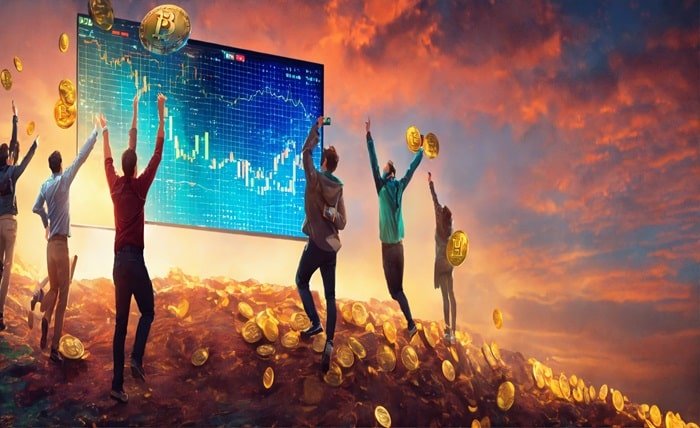Forex trading, also known as foreign exchange trading, is the buying and selling of currencies in the global marketplace. It’s one of the largest and most liquid financial markets in the world, with a daily trading volume exceeding $6 trillion. For beginners, navigating the forex market can seem daunting, but with the right knowledge and strategies, anyone can become a successful trader. In this comprehensive guide, we’ll explore everything you need to know about forex trading, from understanding the basics to mastering advanced strategies.
Forex Trading
Forex trading involves trading currency pairs, where one currency is exchanged for another at an agreed-upon price. The most commonly traded currencies include the US Dollar (USD), Euro (EUR), Japanese Yen (JPY), British Pound (GBP), and Swiss Franc (CHF). Currency pairs are quoted in terms of their exchange rate, which represents the value of one currency relative to another.
Getting Started with Forex Trading
To get started with forex trading, you’ll need to open an account with a reputable forex broker. Choose a broker that offers competitive spreads, reliable trade execution, and a user-friendly trading platform. Once you’ve opened an account, you can fund it with the amount you’re comfortable trading.
Basic Forex Trading Strategies
There are several basic forex trading strategies that beginners can use to start trading:
1. Trend Following: This strategy involves identifying trends in the market and trading in the direction of the trend. Traders look for higher highs and higher lows in an uptrend, and lower highs and lower lows in a downtrend.
2. Range Trading: Range traders identify levels of support and resistance and trade within the range established by these levels. They buy near support and sell near resistance, aiming to profit from the price oscillations within the range.
3. Breakout Trading: Breakout traders look for instances where the price breaks out of a trading range or a chart pattern. They enter trades in the direction of the breakout, hoping to catch a significant price movement.
4. Carry Trade: In a carry trade, traders borrow currencies with low-interest rates and invest in currencies with higher interest rates. They aim to profit from the interest rate differential between the two currencies.
Advanced Forex Trading Strategies
As you gain experience in forex trading, you can explore more advanced trading strategies, such as:
1. Fibonacci Retracement: Fibonacci retracement levels are used to identify potential reversal points in a market trend. Traders use Fibonacci ratios to determine these levels and look for confluence with other technical indicators.
2. Divergence Trading: Divergence occurs when the price of a currency pair moves in the opposite direction of an indicator, such as the Relative Strength Index (RSI) or Moving Average Convergence Divergence (MACD). Traders use divergence to anticipate trend reversals.
3. Price Action Trading: Price action trading involves analyzing price movements and patterns without relying on indicators. Traders look for key levels, candlestick patterns, and chart formations to make trading decisions.
4. Risk Management Strategies: Successful forex traders always prioritize risk management. They use techniques such as setting stop-loss orders, position sizing, and diversification to protect their capital and minimize losses.
Conclusion
Forex trading offers exciting opportunities for individuals to participate in the global financial markets and potentially earn profits. However, it’s essential to approach forex trading with caution and discipline. By understanding the basics of forex trading, developing sound trading strategies, and managing risk effectively, beginners can increase their chances of success in the forex market.
Whether you’re looking to trade currencies as a hobby or pursue forex trading as a full-time career, continuous learning and practice are key to improving your skills and achieving your trading goals.
FAQs (Frequently Asked Questions)
1. Is forex trading risky?
Yes, forex trading carries inherent risks, including the risk of losing capital. However, with proper risk management strategies in place, traders can mitigate these risks and improve their chances of success.
2. How much money do I need to start forex trading?
The amount of money needed to start forex trading varies depending on the broker and the trading account type. Some brokers offer micro or mini accounts with low minimum deposit requirements, making it accessible to traders with smaller capital.
3. Can I trade forex part-time?
Yes, many traders trade forex part-time while maintaining other full-time jobs or commitments. Forex markets are open 24 hours a day, five days a week, allowing traders to choose trading hours that suit their schedule.
4. How long does it take to become a successful forex trader?
The time it takes to become a successful forex trader varies from person to person. It depends on factors such as dedication, learning capacity, and trading experience. With continuous learning, practice, and discipline, traders can improve their skills and achieve success in forex trading.
With the information provided in this guide, you’re equipped to embark on your forex trading journey confidently. Remember, patience and persistence are key virtues in mastering the art of forex trading. Happy trading!




